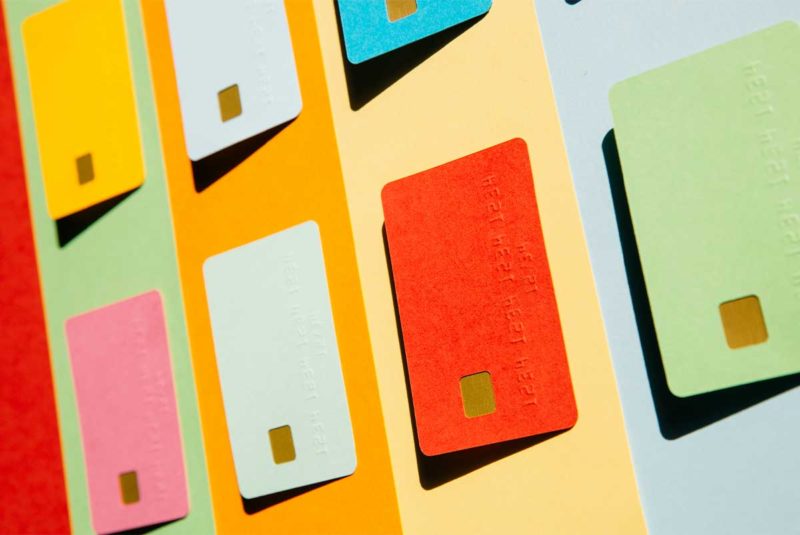In an age of digital payments and mobile wallets, writing out a paper check, balancing a checkbook and even cashing a check can seem archaic.
But even though the use of paper checks has declined over the last 20+ years, it’s still helpful to know the ins and outs of this “old school” way of paying for things.
It can be a useful tool in your money management toolkit, and there may be times when your best and only option for payment is an old-fashioned paper check.
For a quick look at the pros and cons of the paper check, read on.
63%
is the decline in the number of checks written by consumers since 2000.[1]
What Is a Personal Check?
A personal check is a specially designed piece of paper you can use to pay bills and make purchases with the funds in your checking account. Essentially, it’s a written agreement between a payer and payee. It gives the payee permission to draw cash or have money deposited into their account at a financial institution like a bank or credit union.
The payee’s bank (or check casher) then contacts the payer’s bank to get the funds from your account.
All checks contain the following:
- Routing number: This number identifies the bank or credit union where you have your account.
- Account number: This number specifies which account is yours.
- Check number: Each check you write is a unique transaction, so each check has a number (usually 3 or 4 digits) identifying each check.
- Date: There’s a place to indicate when the check was written. A bank can’t honor a check if it’s postdated or received before the date on the check.
- Pay to the order of: There’s also a space to write the name of the person or company who’s entitled to cash or deposit the check.
- Amount: You have to write the amount of the check in two places. If you were writing a check for $500, you’d need to write it numerically and spell it out as “five hundred and 00/100” on the long line with the currency (dollars) written on the check.
- Signature space: This is where you sign your name. If you have a joint checking account with a spouse or partner, you may be able to sign a check yourself, or you may need signatures from both partners.
What Is a Business Check?
As the name suggests, a business check is a paper check used specifically by businesses.
Having a separate business checking account can help you keep your personal and business expenses separate, which can make tax time easier.
Also, if you’re a small business owner or have a home based business, having business checks can help make your business look more legitimate to potential clients and customers.
While the general layout and setup of a business check is similar to a personal check, there are some differences.
- Larger: Business checks tend to be physically larger. This provides more room to write or print information.
- More information: Business checks may require extra spaces if multiple signatures are needed. they may also have additional information printed on them, like “void after 90 days.”
- More formal: While you can get personal checks with unique fonts or images, business checks tend to be more professional. That said, you may be able to get business checks with your company’s logo and other customizations printed on them.
- More security measures: While personal checks come with security features, business checks include added features like holograms, fluorescent fibers, watermarks and heat-sensitive ink. This isn’t just for looks. Because businesses tend to use more checks than an individual, it’s a way for banks to protect themselves from potential fraud.
Where can you cash a check?
The best place to cash a check is with your bank or credit union. However, that may not always be an option.
As of 2021, around 6% of American adults are unbanked, meaning they don’t have access to (or can’t get approved for) an account at a bank or credit union.[2]
Fortunately, there are other options. But some of these options may charge a fee for check-cashing services or set a limit on the size or types of checks they’re willing to cash.
- The issuing bank: If you receive a check and it’s issued through a bank with a local branch, you may be able to cash your check there.
- Grocery and convenience stores: Many grocery stores, drug stores and convenience stores (including Walmart) will cash checks for customers.
- Check cashing stores: These places will cash your check any time of day. They can be convenient but often charge higher fees. A check cashing store may also be connected to a payday loan or other forms of predatory lending.
How long is a check good for?
Checks are usually good for up to 6 months (180 days), though some business and payroll checks may claim the check is void after 90 days.
PROS of Paying With Checks👍
The relative slowness of using a check may seem old-fashioned, but it can make budgeting simpler. Having to wait a few days can make it easier to ensure that the money you need to cover a payment is in your account. It’s also easier to track multiple payments made around the same time if you have a written record of each transaction.
When you take out cash at an ATM, or use your credit or debit card at the store, you’re likely going to be charged a “convenience fee.” With checks, no fee is required.
Because a personal check needs to be cashed or deposited, it makes it harder to steal, especially compared to cash or a gift card.
When you write a check, it can be used anywhere and given to anyone. In some cases, a check may be required if you’re making a larger payment.
If your bank or credit union has a mobile banking app, it’s likely to have a check deposit feature. This makes it easy to deposit checks anywhere at any time.
CONS of Paying With Checks👎
Because paying by check takes more time, there’s a risk of drawing money from your account and not leaving enough to cover the check when it goes through.
When you first set up a checking account, you’ll usually need to pay for your paper checks. Depending on whether you get them through your bank or a third party service, or if you get your checks customized, a box of 100 checks can cost as much as $30, or 30 cents a check.
While checks are good for larger payments, they tend to be less convenient and harder to track for smaller amounts compared to using a debit card, credit card or paying with cash. Also, no one wants to get stuck in line behind the person who’s writing out a check for a small purchase.
What Are Alternatives to Writing Checks?
Of course, most of us don’t use paper checks for most purchases. If you’re looking for ways to pay people quickly, there are other methods of payment available.
I don’t use a debit card. The safest thing is a credit card because you’re using the bank’s money. If someone accesses your information, they are stealing the bank’s money, not yours.
Frank Abagnale, Jr., Security Consultant and Former Con Artist
Debit and credit cards
Using debit and credit cards to make payments is probably the most common replacement for checks. Also, when you make payments using your credit card (and pay off your balances) it can help you build your credit and maybe earn some rewards.
Online banking apps
Most cell phones include a mobile wallet that allows you to link your checking, savings and credit card accounts. You can use this at the store or send money directly to your contacts from your financial institution using programs like Zelle.
Mobile payment apps
Using the mobile payment app on your phone, or apps like PayPal or Venmo, it’s possible to send and request money quickly and securely and make electronic payments in almost no time at all.
Automated bill payment
If you have creditors like utility or phone companies you pay monthly, or if you’re making monthly installment payments on a loan, you may want to take advantage of their automated payment option. You simply connect the creditor with a credit card or link them to a checking or savings account, and they’ll automatically deduct the amount you owe each month.
Are Checks Still Useful in 2022?
A check doesn’t offer the speed and convenience of mobile payment apps or card payments. This is a big reason why the use of checks has declined significantly in recent years. However, it may still be a good idea to have a checkbook available if:
- Your bank card is lost or stolen. You can still use checks to pay people or get money from your account.
- You need to pay someone who doesn’t have access to a bank or doesn’t have a bank account that accepts mobile payments.
- You need to make larger payments. This may be especially helpful if you’re working with a contractor.
- You have a small business and don’t have a business checking account. Using checks for payments can provide you with a more professional way of making payments, and also provides a paper trail you may need at tax time.
Your Parents’ Payment Method Has Some Perks
Having a paper checkbook is a little like having a dedicated landline in your home. It can’t text or pull up apps, but in an emergency, when you can’t charge your cell phone, it will always be there for you.
So even if you don’t use a check very often, it’s helpful to have around for the times when you need it.
The Short Version
- When you write a check, it can be used anywhere and given to anyone. In some cases, a check may be required if you’re making a larger payment
- Because paying by check takes more time, there’s a risk of drawing money from your account and not leaving enough to cover the check when it goes through
- While checks are good for larger payments, they tend to be less convenient and harder to track for smaller amounts compared to using a debit card, credit card or paying with cash
U.S. Federal Reserve. “U.S. Consumers’ Use of Personal Checks: Evidence from a Diary Survey.“ Retrieved July 2022 from https://www.federalreserve.gov/publications/2022-economic-well-being-of-us-households-in-2021-executive-summary.htm
U.S. Federal Reserve. “Report on the Economic Well-Being of US Households in 2021 – May 2022.” Retrieved July 2022 from https://www.federalreserve.gov/publications/2022-economic-well-being-of-us-households-in-2021-executive-summary.htm




